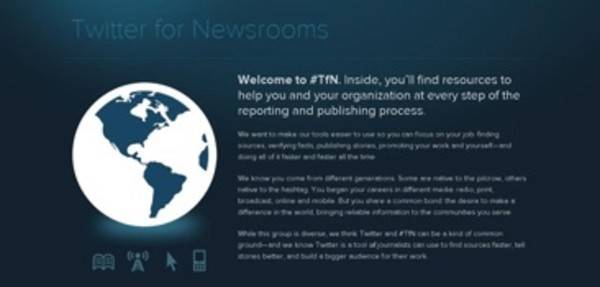In a savvy sashay of marketing brilliance, Twitter was able to attract more journalists’ eyeballs to its platform than anything short of an overwhelming disaster could garner. And it was able to do so in a matter of minutes with absolutely no news at all.

While much of tech media trumpeted the introduction of Twitter for Newsrooms (#TfN) as if the guidelines for journalists presented some new technology or service, Twitter and its partners made off like bandits with the sustained and focused attention of the most influential group of people on the planet: journalists and bloggers.
Pam Baker has written hundreds of articles in leading technology, business and finance publications. She has also authored several analytical studies on technology, eight books and an award-winning documentary on paper-making. She is a member of the National Press Club (NPC), Society of Professional Journalists (SPJ), and the Internet Press Guild (IPG). She can be reached at [email protected] and on Twitter at @bakercom1.
For the ability to stop journalists in their tracks and make them stare at the product as one, I tip my hat. Well done, Twitter, well done.
Despite the free publicity ride that is bound to boost the brand and attract app developers in droves, the TfN guidelines are indeed helpful to journalists.
Search options are covered in detail — from basic to advanced — for journalists new to using search to parse tweets. Directions are also provided in how to negate search rate limits so that a journalist or team of researchers can search endlessly. Ditching the rate limits, I must say, is a welcomed change.
The publish guidelines are instructional and helpful in everything from embedding Tweets and publishing them on air to displaying tweets on the news media’s respective websites. Wow! More free promotion for Twitter! Somebody hand those boys an advertising rate card. After all, as we wrote about last week,Twitter is busy selling promoted Tweets.
The Extra section of the guidelines offers links to support and safety teams, Twitter’s many internal blogs, foreign language tools, and an intro to its ecosystem partners. The Media Ecosystem Directory link at the bottom of that page is a bit misleading as it leads to a directory of partners who can help media do various tasks and analytics, but are not media-specific tools per se. The buttons at the top of the directory claim to allow a search of partners in the ecosystem by subject or task but appear to be dead. The journalist is left with a simple list of 20 partners all briefly described and with a link to the partner’s website. In other words, it’s a list of partners, a billboard, and a far cry from an app store. However, I wouldn’t be surprised if an app store is exactly what Twitter is aiming for and what better way to attract a critical mass of developers in a big, fat hurry than to attract so many journalists first?
No doubt editors, community developers, new media specialists, and social media gurus in newsrooms worldwide quickly thrust the Twitter for Newsrooms URL in the email inboxes of every journalist in the office or in the field. Equally without doubt, journalists with no to massive amounts of experience with Twitter searched its pages with keen interest. Each and every one of them was searching for secrets and shortcuts they hoped would ease the pressures associated with news production and news promotion at Internet speeds.
Many would make the guidelines themselves news and never catch the slightest whiff of Twitter’s sublime “news media needs us” play.

It’s not that journalists are the befuddled baboons that many inside and outside of media like to portray them to be, it’s that journalists have yet to discover social media’s limits in news production and therefore are slow to question whether there are any limits.
Case in point: the plethora of references to Twitter as the newsroom in tech and media reporting. That claim is pure baloney.
Twitter is not a newsroom. It’s more a smoky bar, shadowy garage, corporate breakroom, and boisterous mob gathering — places reporters traditionally went to tease out news leads — all rolled into one. Twitter is a place where people talk, often while inebriated or delusional (believing a public forum is somehow private). It’s a gathering of intelligent and average people with smart thoughts and dumb thoughts. It’s peppered with marketing people with PR ploys and social media pros with marketing plays. It’s a collection of friends and enemies, strangers and acquaintances, rebels and tea partiers and traditionally scandalous politicians. In other words, it’s a reflection of the real world with a bounty of tidbit pickin’s and tantalizing leads, but it isn’t a newsroom.
Twitter is just one of many places journalists go to meet sources and troll for news.
But there’s not one damn tweet found in a random Twitter search that any reporter worth his or her salt is going to trust. Not even if that Tweet came from his own mama’s smartphone. The info in the tweet, as well as the identity of the Tweeter, will be checked and rechecked. That’s what journalists do. They don’t trust, they ask questions.
Yet most journalists trusted every word of the Twitter for Newsrooms guidelines and immediately took the words to heart. Almost to a man, journalists wrapped themselves tightly in Twitter’s “how-to” as though it were a lifeline in a rough sea. And perhaps it is.
Well done, Twitter. Well done.










